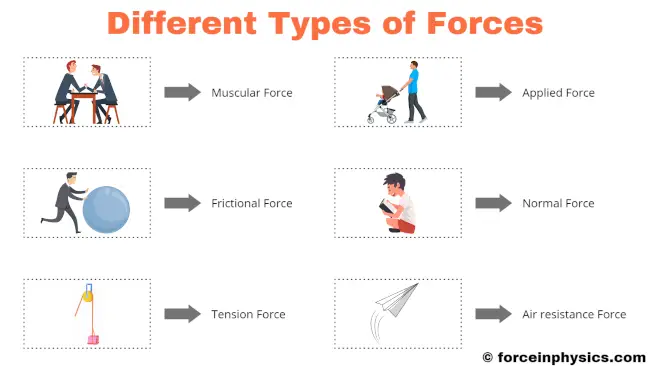
In physics, forces are broadly categorized into two main types: contact forces and non-contact forces. Contact forces result from direct physical interaction between objects, such as friction and tension, while non-contact forces, like gravity and magnetic forces, act at a distance without physical contact between objects.
| Muscular force | Magnetic force |
| Friction | Gravity |
| Tension (physics) | Electrostatic force |
| Applied force | |
| Normal force | |
| Drag (physics) | |
| Mechanical force | |
| Spring force | |
Contact force
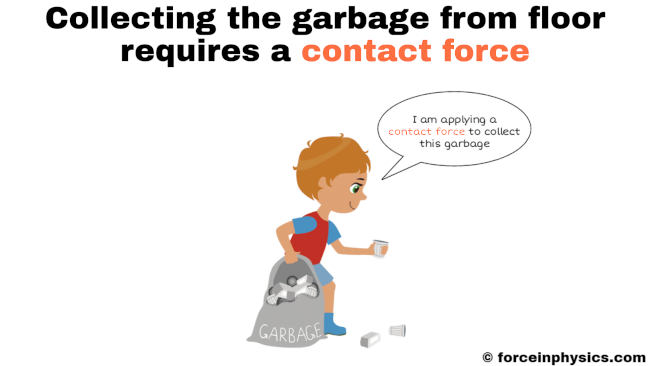
In this scenario, a boy picks up garbage from the floor, and the act of collecting garbage involves direct contact between his hand and the garbage. This contact between the boy’s hand and the garbage generates a contact force. Contact forces, as demonstrated here, occur when two objects – in this instance, the garbage and the boy’s hand – come into direct interaction, resulting in the application of force through their physical contact.
Muscular force
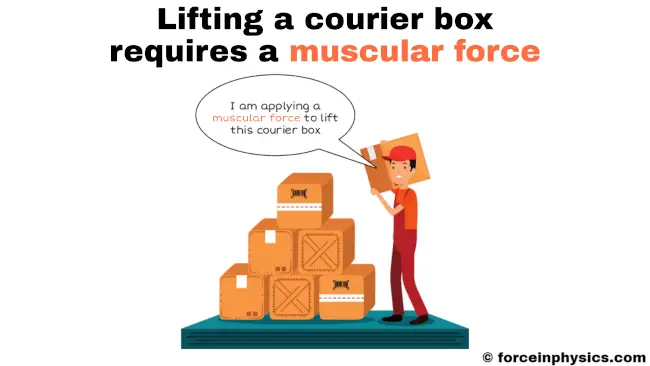
Here, a boy lifts a heavy courier box, and his muscles apply force to accomplish this action. This specific force is referred to as muscular force. When the boy lifts the courier box, his muscles contract and apply the necessary force to overcome gravity‘s pull, enabling him to elevate the object. Muscular force, as demonstrated here, is the application of physical effort generated by muscle contractions to manipulate or move objects, such as lifting a courier box.
Friction
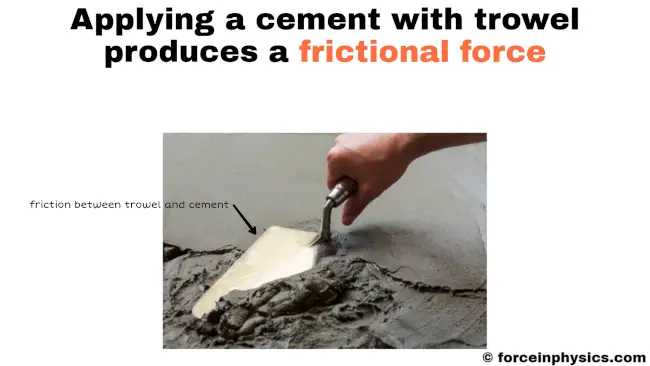
When applying cement with a trowel, the surfaces of the cement and the trowel come into contact and slide against each other. This interaction creates friction, which is a force that opposes the direction of the trowel’s movement. This frictional force makes it more difficult to smoothly apply the cement. Friction, in this context, is the resistance encountered when two surfaces slide or attempt to slide against each other, and it is crucial in various everyday tasks where surfaces come into contact.
Tension
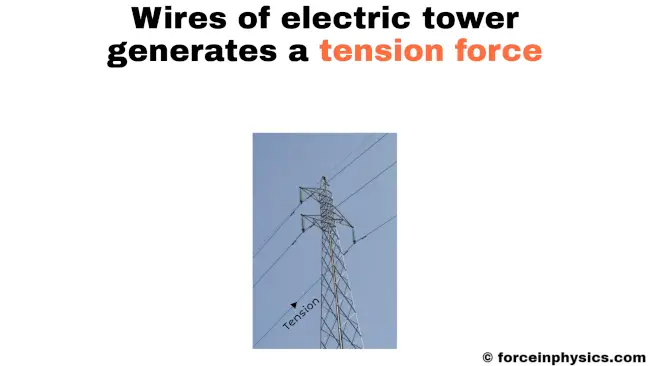
Tension force is a result of a pulling or stretching force that occurs in objects like ropes, cables, or wires when they are subjected to opposing forces at their ends. Electric wires hanging from an electric tower, for instance, experience forces pulling in opposite directions, creating tension within the wires. This tension force is responsible for transmitting force along the length of the wires. Tension forces are fundamental in various real-world applications, such as suspension bridges and the operation of elevators, where they play a crucial role in maintaining structural integrity and facilitating movement.
Applied force

In this scenario, a refrigerator door is opened by applying force with a hand. This applied force, originating from external action, induces motion in the refrigerator door. Applied forces, as exemplified here, are external influences applied to objects, like human effort, and these forces lead to changes in the object’s state of motion or position.
Normal force
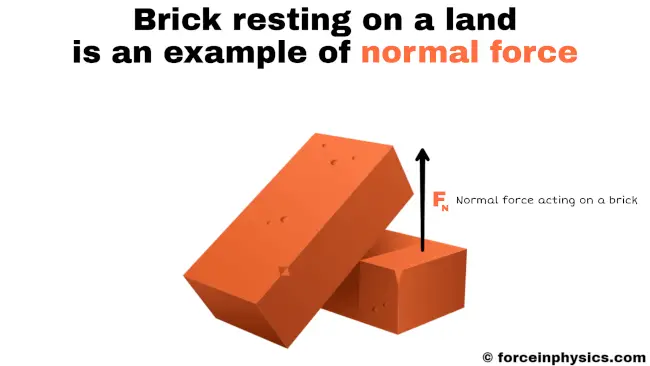
When an object, such as a brick, rests on a surface, the surface exerts a force vertically upward on the object. This force, known as the normal force, arises due to the contact between the object and the supporting surface. It counterbalances the force of gravity pulling the object downward. Essentially, the normal force prevents the object from penetrating or sinking into the surface, ensuring its equilibrium.
Drag
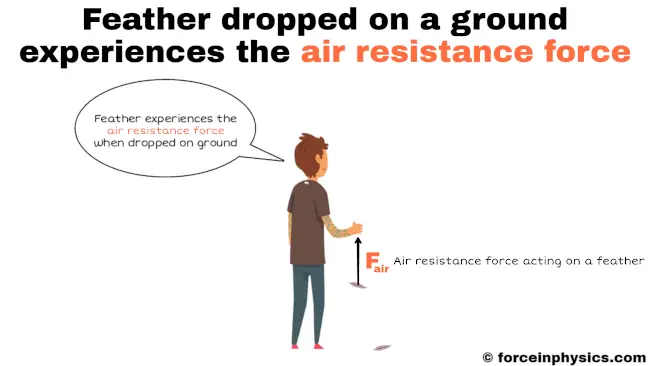
As a feather descends toward the ground, it encounters an upward force known as drag. In this specific example, drag signifies the resistance exerted by the air as the feather traverses through it. While the feather descends, the drag force opposes its downward movement, gradually decelerating the feather’s fall until it reaches a state of equilibrium, where the drag force equals the force of gravity acting upon it. This example effectively demonstrates how drag, or air resistance, hinders the motion of objects navigating through a fluid medium like air, affecting both their speed and trajectory.
Mechanical force
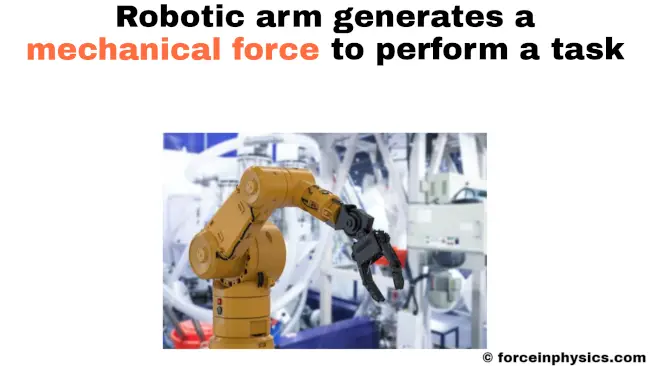
A robotic arm used in a factory demonstrates mechanical force by performing tasks such as assembly, welding, or material handling. The arm uses motors and actuators to generate forces that move its joints and tools. These mechanical forces enable it to manipulate objects, apply pressure, and make precise movements, converting electrical energy into physical actions. This illustrates how mechanical force is key to automated manufacturing operations.
Spring force
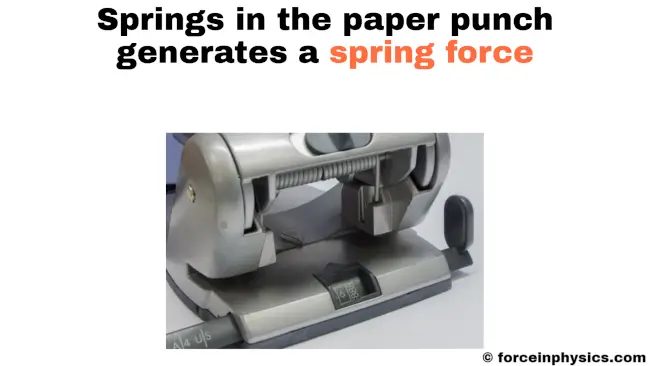
When a hole punch is pressed, it compresses an internal spring, generating a spring force. This spring force propels the punch’s cutting edge through the paper, creating a hole. The example demonstrates how the compressed spring exerts pressure, enabling the hole punch to effectively pierce the paper.
Non-contact force

When tree branches fall to the ground, there is no direct contact between the branches and the ground. Instead, the branches descend naturally due to the force of gravity but without physical contact. This absence of contact between the two objects, the branches and the ground, exemplifies a non-contact force. Non-contact forces act on objects without requiring physical touch or direct interaction between them, as demonstrated by the gravitational force in this scenario.
Magnetic force
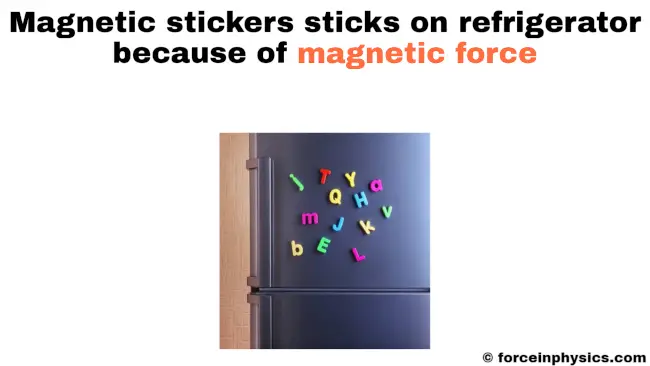
Magnetic stickers adhere to the refrigerator door due to the magnetic force. When these stickers are brought near the door, they experience an attractive force drawing them towards it. This magnetic force is responsible for the stickers sticking to the door, as it acts to pull them into contact with the door’s surface.
Gravity
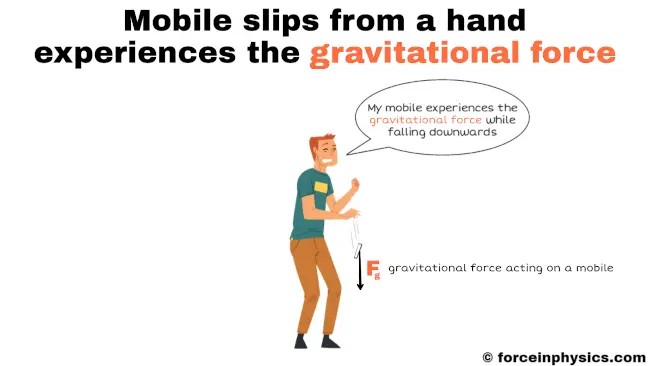
Imagine a scenario where a mobile phone slips from a hand. In this situation, the force of gravity comes into play and pulls the mobile downward. Gravity, a natural force that operates without physical contact, is responsible for this. It consistently pulls objects towards the center of the Earth.
Electrostatic force
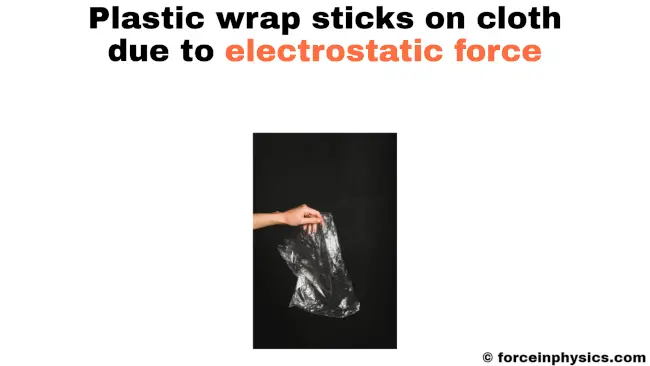
When a piece of plastic wrap is brought near various insulating materials, such as cloth or a comb, they exhibit a peculiar behavior – they stick together. This intriguing force, known as electrostatic force, is responsible for this interaction. Unlike contact forces, electrostatic force operates without any direct physical contact between the objects involved. In this scenario, the buildup of electrical charges on the plastic wrap and cloth creates an attraction, causing them to adhere to each other.
Related
- Balanced force
- Unbalanced force
- Friction
- Tension (physics)
- Applied force
- Normal force
- Drag (physics)
- Gravity
- Centripetal force
- Centrifugal force
- Buoyancy
- Net force
- Compression (physics)
More topics
External links
- Types of Forces – The Physics Classroom
- Types of Forces: Explanation, Review, and Examples – Albert
- Types of Forces – Mocomi Kids
- Force – Wikipedia
- Force: Definition, Equation, Unit & Types – StudySmarter UK
- Force – Brigham Young University
- Give 10 examples of force and briefly describe each force there is – Homework.Study.com
- Types of Forces (Read) | Physics – CK-12 Foundation
- Types of forces and free body diagrams (video) – Khan Academy
- Types of Forces – Science Games and Videos for Kids – NeoK12
- Forces Different Types of Forces – Thomastown Primary School
- Types of Force – Maths Is Fun
- Types of Forces: Definitions and Examples – Science Facts
- Types of Forces (GCSE Physics) – Study Mind
- Forces – NASA Universe Exploration (.gov)
- Ten Different Types of Forces – Sciencing
- Types of Forces – Physics LibreTexts
- Force | Definition, Unit, Types, and Applications – What’s Insight
- 11 Different Types Of Forces – RankRed
Deep
Forceinphysics.com was founded by Deep Rana, who is a mechanical engineer by profession and a blogger by passion. He has a good conceptual knowledge on different educational topics and he provides the same on this website. He loves to learn something new everyday and believes that the best utilization of free time is developing a new skill.
